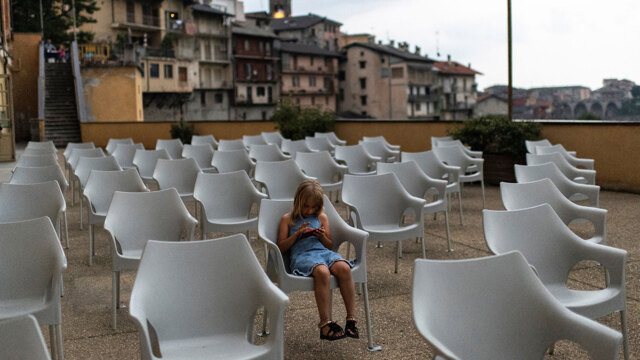Over the next five decades Italy will suffer one depopulation of 12 million people. According to the National Statistics Institute (Istat), the current 59.6 million residents in 2070 will become 47.6 million.
Barring unforeseeable changes today, Italy will lose a number of people equal to the inhabitants of Lombardy and Liguria. Not only that: if the field is narrowed on the south and on the islands, from 20 million inhabitants it will drop to 13 million, with a population decline of 35 percent: one resident out of three.
Depopulation will affect 81 percent of the municipalities and will mainly affect the inhabited centers of rural areas. According to an Istat census, today there are already more than six thousand small towns and villages that are uninhabited or at risk of abandonment. A number destined to increase in the coming decades.
89,5
years
the life expectancy of women born in 2070
There will be fewer people, and later with age. L’life expectation it will continue to rise, reaching 88 years for those born in 2070, about four years more than those born today in Italy. This aspect, combined with the decline in births, will lead the ratio between young and old to vary: in 2050 for every young person there will be three elderly people and people of working age will drop from 63.8 percent to 53.3 in thirty years. percent of the total population, inevitably putting welfare under pressure.
Today the region with theold age index the highest is Liguria (262 seniors per 100 young people), while the one with the lowest index is Campania (139 seniors per 100 young people). The province with the highest old age index in Italy is Oristano with 284 elderly people for every 100 young people. The one with the lowest old age index is Caserta, at 125.
Even the families they will undergo a transformation: they will be more, but smaller, denoting a process of fragmentation that continues along with the aging of the population, the increase in divorces and the decline in marriages.
Couples with children are decreasing, and those without children are increasing: by 2040 one in four families will be made up of a couple with children (slightly more than those made up of couples without children, one in five of the total). In addition to this, in twenty years the number of people living alone will go from 8 to 10 million.
According to the United Nations, the number of sons per woman in Italy will stabilize on an average of 1.5 in 2050 and 1.6 in 2100, a higher number than the current one, but not sufficient to guarantee generational turnover, also due to the decrease in people of childbearing age.
10,3
millions
people who will live alone in 2040
In 2020 the average age of women at first birth he is just over 32 years old, with the minimum age registered in Syracuse (30 and a half years) and the maximum in Oristano (33 and a half years). In 1991 the average age was 29. Fathers have their first child at the average age of 35 in 2020. In Europe the trend is very similar, with the lowest indicator in Bulgaria (where those who become mothers on average are 27 years old) and the highest in Ireland ( 32 and a half years old).
European data shows that the percentage of children with at least one parent from another country is increasing. In Italy the number of children who have at least one non-Italian parent it rises year after year in percentage terms.
In 2019 in Italy, 23 percent of children were born to couples with at least one non-Italian parent (almost one in four). Ten years earlier, the figure was 16.6 percent (about one in six).
2048
the year in which deaths will double the number of births
A trend also recorded in other European countries, such as in Austria where one third of children born in 2019 had at least one parent from another country, Spain (28 percent) and Sweden (31 percent). An annual increase in percentage terms confirmed by Eurostat in almost all the countries of the European Union.
The aging of the population and the low birth rate affect the entire European Union, the United States and also China, while the opposite is recorded in Africa, where the average age today is 19.7 years and a rate is estimated fertility rate (the average number of children per woman between the ages of 15 and 49) very high: in 2020, a woman had an average of 4.6 children, almost double the global average.
And even if the average number of children per woman in Africa begins to decline, a significant increase in the total population is expected: from 1.3 billion today to 2.5 billion people in 2050 to 3.8 billion in 2100, according to the United Nations. All while the European Union, according to Eurostat, will go from 447 million inhabitants today to 441 million in 2050 and 416 million in 2100.
